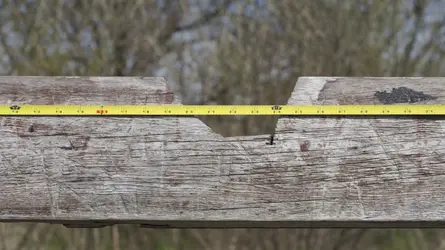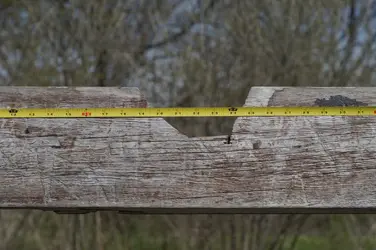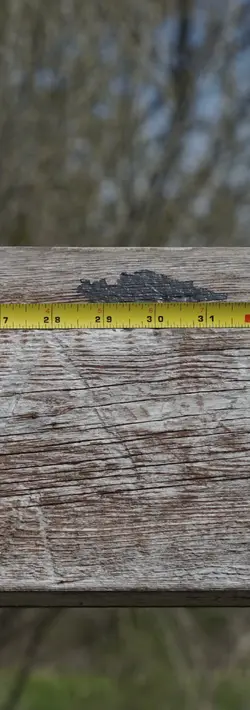VidThreeNorth
No longer a newbie, moving up!
- Joined
- Oct 21, 2016
- Messages
- 1,487
- Reaction score
- 413
- Can others edit my Photos
- Photos NOT OK to edit
I am doing some general analysis of the Sony a5000 video capability.
Full HD (1920 x 1080) Video Crop
There is a slight crop when using Full HD video. I have known that for some time, but I am just getting around to testing it. For this test I wanted to make sure there was no adjustments made by the camera's processing, so I used a Pentax 50mm F2.0 lens, manually focused. I set up a test using a tape measure, and I recorded a video at Full HD, and then I took a still picture at full resolution. I captured a frame from the video, and these are the results.
[2020-06-28 15:40 I recorded the video and the still picture both at F5.6]
"00005.MTS"
Created May 17, 2020, 10:05:51 - 10:06:58
Size 180,879,360 bytes
Video
Length 1:05
Frame width 1920
Frame height 1080
Data rate 21,826 kbps
Total bitrate 22082 kbps
Frame rate 23 frames/second [sic]
Audio
Bit rate 256 kbps
Channels 2 (stereo)
Audio sample rate 48 kHz
DSC01293.JPG
2020-0517 10:08
Width 5456
Height 3632
Resolution unit 2
Compressed bits/pixel 2
Exposure 1/1000 sec.
ISO speed ISO-100
Meter mode: Center Weighted Average
Brightness 4.74765625
Sharpness Soft
White balance Auto
Looking at the X axis alone:
Missing ~15 pixels on left
Missing ~25 pixels on right
Total missing ~40 pixels
Picture Width 5456 pixels
so approximate crop relative to sensor = (5456 - 40) / 5456 * 100
= 5416 / 5456 * 100 ~ 0.993%
The "Crop Factor" relative to the sensor size is ~ 1.007
Compared to Full Frame = (1.5 * 1.007)
~1.51
As I have written before, this is generally ignorable, though occasionally I have had to adjust my zoom or camera position slightly.
NOTE: You might notice that the tape measure is not exactly midway through the frame. I felt it was close enough. . . .
[2020-06-28 15:41 Because I used the Pentax lens, there should not be any distortion correction. Distortion correction could change the relationship between the location of a sensor and the pixel where it would normally be represented. If this had not been done, then locating the tape through the middle of the picture would have simplified calculating a reverse compensation. So really, the location of the tape actually should make no difference. But if I had detected some "correction", then being closer to the middle line is easier to work with, so would have been preferable.]
I have uploaded the Full HD captured frame at highest detail ("a5k-1080p-16h03m57s255-C1.jpg"), a resized copy of the still picture ("DSC01293a-Rsz1803-C1.JPG") and crops of the far left end of the still picture ("DSC01293b-Left-C3.JPG" slightly reduced detail) and the far right end of the still picture ("DSC01293c-Right-C4.JPG" slightly reduced detail). If you feel like counting the pixels to see the difference, have fun. . . .

Full HD (1920 x 1080) Video Crop
There is a slight crop when using Full HD video. I have known that for some time, but I am just getting around to testing it. For this test I wanted to make sure there was no adjustments made by the camera's processing, so I used a Pentax 50mm F2.0 lens, manually focused. I set up a test using a tape measure, and I recorded a video at Full HD, and then I took a still picture at full resolution. I captured a frame from the video, and these are the results.
[2020-06-28 15:40 I recorded the video and the still picture both at F5.6]
"00005.MTS"
Created May 17, 2020, 10:05:51 - 10:06:58
Size 180,879,360 bytes
Video
Length 1:05
Frame width 1920
Frame height 1080
Data rate 21,826 kbps
Total bitrate 22082 kbps
Frame rate 23 frames/second [sic]
Audio
Bit rate 256 kbps
Channels 2 (stereo)
Audio sample rate 48 kHz
DSC01293.JPG
2020-0517 10:08
Width 5456
Height 3632
Resolution unit 2
Compressed bits/pixel 2
Exposure 1/1000 sec.
ISO speed ISO-100
Meter mode: Center Weighted Average
Brightness 4.74765625
Sharpness Soft
White balance Auto
Looking at the X axis alone:
Missing ~15 pixels on left
Missing ~25 pixels on right
Total missing ~40 pixels
Picture Width 5456 pixels
so approximate crop relative to sensor = (5456 - 40) / 5456 * 100
= 5416 / 5456 * 100 ~ 0.993%
The "Crop Factor" relative to the sensor size is ~ 1.007
Compared to Full Frame = (1.5 * 1.007)
~1.51
As I have written before, this is generally ignorable, though occasionally I have had to adjust my zoom or camera position slightly.
NOTE: You might notice that the tape measure is not exactly midway through the frame. I felt it was close enough. . . .
[2020-06-28 15:41 Because I used the Pentax lens, there should not be any distortion correction. Distortion correction could change the relationship between the location of a sensor and the pixel where it would normally be represented. If this had not been done, then locating the tape through the middle of the picture would have simplified calculating a reverse compensation. So really, the location of the tape actually should make no difference. But if I had detected some "correction", then being closer to the middle line is easier to work with, so would have been preferable.]
I have uploaded the Full HD captured frame at highest detail ("a5k-1080p-16h03m57s255-C1.jpg"), a resized copy of the still picture ("DSC01293a-Rsz1803-C1.JPG") and crops of the far left end of the still picture ("DSC01293b-Left-C3.JPG" slightly reduced detail) and the far right end of the still picture ("DSC01293c-Right-C4.JPG" slightly reduced detail). If you feel like counting the pixels to see the difference, have fun. . . .
Attachments
Last edited:















![[No title]](/data/xfmg/thumbnail/42/42461-e2a94a39b9483a804af86010fc52244b.jpg?1734176997)
![[No title]](/data/xfmg/thumbnail/39/39188-ef8378fc9359eda8e99899c2e12f3892.jpg?1734173063)

![[No title]](/data/xfmg/thumbnail/42/42253-fef7e43227f484b1a95dd6d85c03bd40.jpg?1734176623)